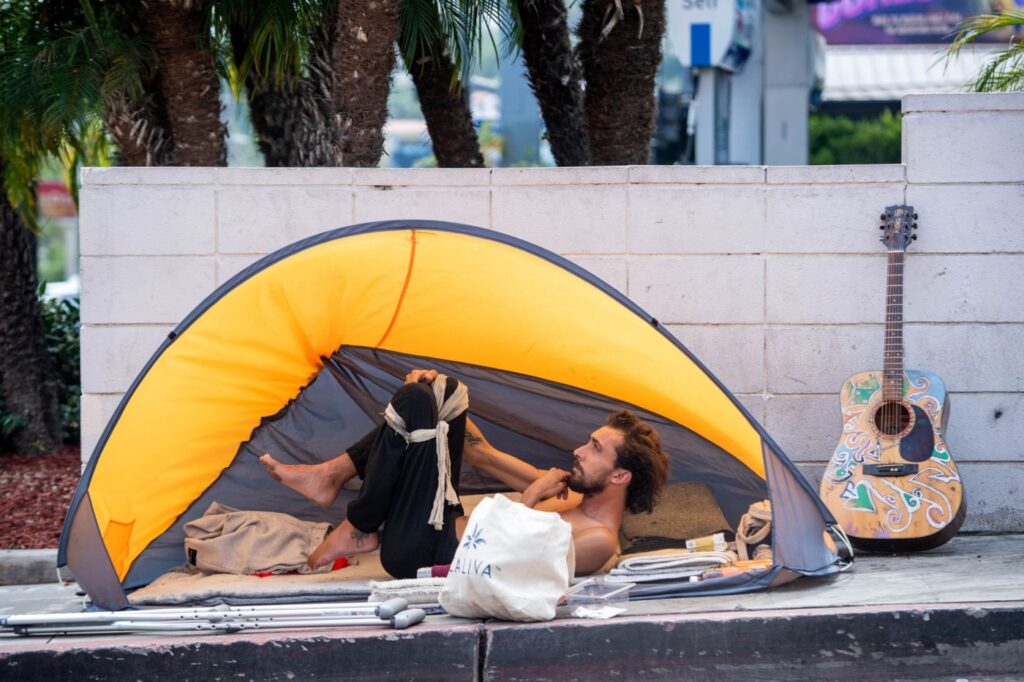
We often criticize Gov. Gavin Newsom for throwing money at the state’s problems rather than coming up with creative and cost-effective alternatives, so we’re pleasantly surprised by his recently announced “new strategy” for tackling the California’s growing homelessness problem. The proposal is remarkably innovative and reflects the best and latest thinking on the issue.
The governor proposes a Community Assistance, Recovery and Empowerment (CARE) Court that directs homeless people with mental-health or substance-abuse issues toward psychiatric and social services rather than into the jail system. “The largest mental institution in the United States is the LA County jail,” Newsom said during a press conference last Thursday.
That’s an eye-opening but accurate point – and one that reinforces the need for a different approach. The overwhelming majority of homeless people suffer from mental illness or drug and alcohol addiction, and often end up incarcerated when they misbehave. They either wander around the streets fighting with their demons, or locked up in a facility designed to punish rather than treat people.
The governor’s plan, which requires legislative approval, would expand upon an existing model – but would now require every county to participate. People who are suffering from psychosis could come before a special judge if “they are suspected of a crime, an involuntary hold in a psychiatric emergency room is ending, or a family member believes they can’t care for themselves,” the Sacramento Bee reported.
The program attempts to address the current conundrum. California officials had routinely detained mentally disabled people for indefinite periods – something that led to abuses of civil liberties and the creation of a dismal asylum system. That led to the 1967 passage of the Lanterman Petris Short Act, which largely ended court-ordered involuntary commitments except for those people who commit criminal acts.
While the old system went too far in one direction, the new system goes too far in the other by leaving few humane ways to get people with serious mental health problems the help they need. Most lack the wherewithal to seek out services, so they live in parks and encampments by the railroad tracks. The CARE Court provides a means to push people into a court-supervised plan for up to 24 months.
“This is a completely new strategy,” Newsom said. “And I hope that creates a space for a different conversation than we’ve had in the past.” That’s exactly what we need – and we hope that conversation mentions the need for boisterous oversight to evaluate how the CARE Courts are working.
However, we’re dismayed by the reaction of the ACLU California Action. In a statement to CalMatters, one of the group’s officials argued that, “The problem of homelessness is caused by the cost of housing, and we won’t solve homelessness, mental health or substance abuse problems in our communities by locking people up and drugging them against their will.”
Although the tight housing market exacerbates the homelessness problem, the issue is not primarily about housing availability. Strategies that put housing first and fail to address the depth of people’s mental-health and substance-abuse issues offer no long-term solution. And we see the CARE Court as a means to break out of the current incarceration-focused model.
The devil is in the details, but the framework is promising. We look forward to analyzing the fine print.
